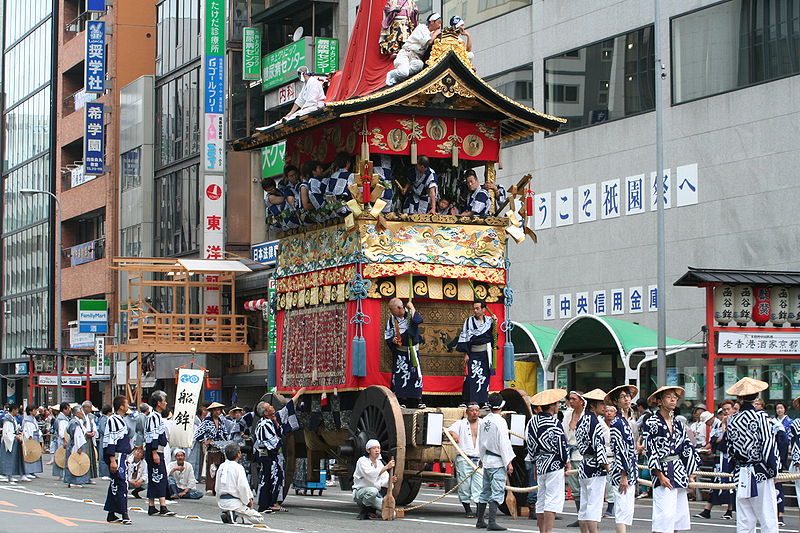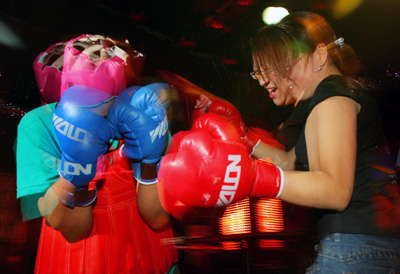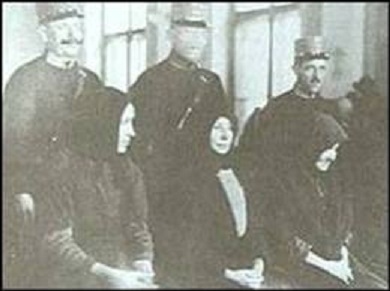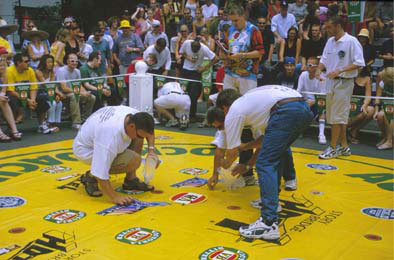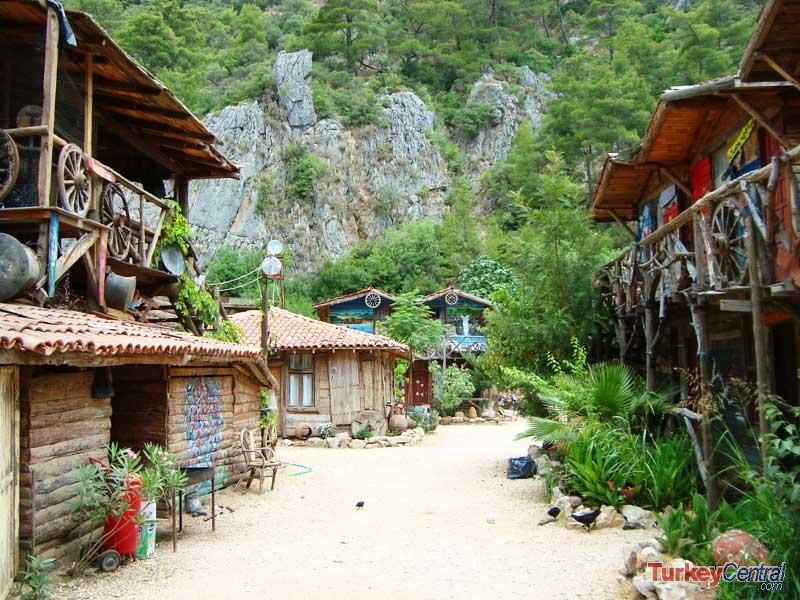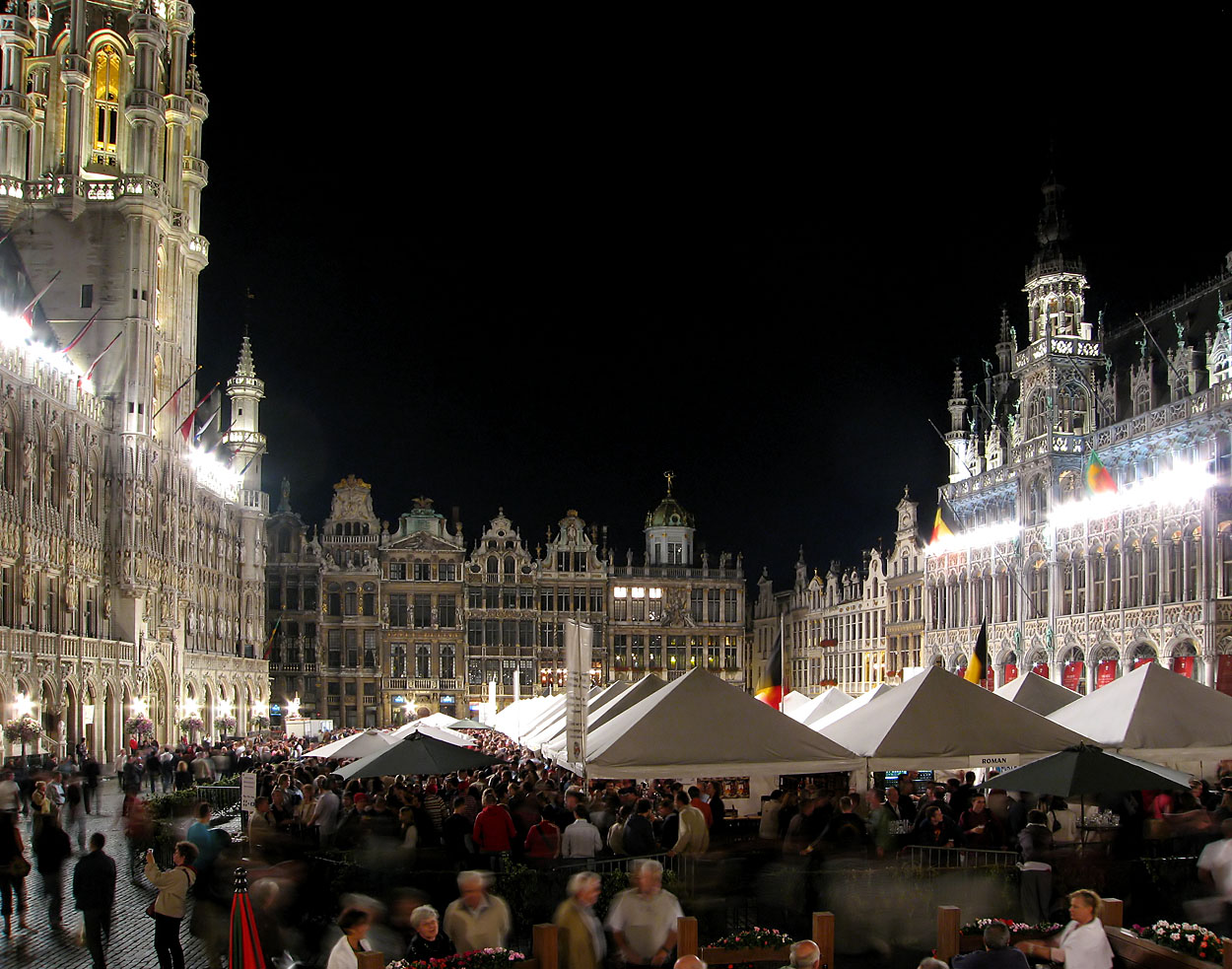Gion Matsuri
Gion Matsuri is one of the most famous and largest festivals in Japan. This event is held to celebrate more than 1200 years of history in the city of Kyoto. It takes place in July of each year at the city’s Yasaka-jinja Shrine. Though the festival technically lasts for the entire month of July, the most famous days to visit are from the 14th to the 17th, when there are several parties and a grand parade.
The origins of Gion Matsuri lie in the tendency of Japanese people in the past to associate natural disasters with the displeasure of evil spirits. Kyoto has seen its fair share of disasters and the first Gion Matsuri was formed more than 1000 years ago to combat a series of plagues that the region was suffering from. It evolved over time from being a religious festival to encompassing more worldly
matters, as merchants and craft guilds used the festival as an opportunity to show off their wealth in the form of extravagant floats.The main highlight is, of course, the floats, which number 32 each year. There are two types of floats on display at the parade, neither of which uses any nails in their construction. The first type is the “yama”, floats designed to demonstrate the history and mythology of Japanese and Chinese culture. The other type is the giant, 2-storyed “hoko”. These floats are the pride of the parade and many think of them more as art museums that happen to be moveable. The huge contraptions often take up to 50 men to move and are decorated lavishly, with sculptures and other works of art.
The parade of floats makes its way through the streets of the city on the 17th, accompanied by musicians and children in costumes. Preceding the parade is the Yoiyama festival, from the 14th to the 16th. During this time, people celebrate and have fun and the locals open up their homes to outsiders in order to show off their various art collections. There is hardly a better chance to both see an important Japanese cultural tradition as well as visiting the insides of actual Japanese homes.
The Rising Sun Anger Release Bar
Nanjing, China has the distinction of having one of the strangest concept bars in the world. It’s called the Rising Sun Anger Release Bar and it’s a place where you can go to enjoy a meal and a drink, break things and take out the frustrations of the day with a little full-contact combat. Who are the lucky individuals who get to endure the wrath of your crappy day? Why, specially trained members of the staff, of course.
The bar employs 20 people to act as beating victims. They are all healthy men, in their 20s and 30s, and they undergo special training by the bar so that they’re ready for whatever you have to throw at them. As part of the process, the customer gets to decide what their human punching bags will wear. So you can dress them up as your boss, an ex-lover that you happen to have ended things badly with or that annoying uncle who ruins Christmas every year. Whatever you can think of, they’ll do their best to accommodate. In addition to your choice of clothing, they also wear a full set of protective gear, just to make sure they don’t end up in the hospital.
And if beating someone up doesn’t seem to help, the bar provides other ways to work through your anger. Glass smashing is totally acceptable, though I’m guessing that will put your bill up a little bit. For especially tough cases, the bar employs four psychology students so customers can talk their way through their problems instead of just punching someone.
The bar gets a bit of flak for the service it provides, as could be expected, but customers keep coming back for more and it’s gaining in popularity. Oddly enough (or perhaps not so odd), most of the customers at Rising Sun are women.
If you happen to make it to Nanjing and want to take a few shots at a stranger, stop by Rising Sun. It’s actually pretty cheap considering you’re beating on someone, costing anywhere from $10 to $35 per “bout,” depending on what your preferences are. And whether you choose to take a few shots or just watch other people letting out their anger, it’s an experience you’re not likely to forget.
Profile: The Angel Makers of Nagyrev
- Full Names – Julia Fazekas, Susi Olah and more unknown
- Nickname – Angelmakers
- Born – n/a
- Location of Activity – Nagyrev, Hungary
- Years of Activity – 1914 - 1929
- Number of Kills – 45-50 confirmed, 300+ possible
- Date of Death – n/a
- Cause of Death – n/a
The Angel Makers of Nagyrev were not so much a group of serial killers as a collection of seemingly normal people, mostly women, who, upon the advice of one particular woman, decided to solve many of their problems by using poison. Over the course of 15 years, at least 50 and possibly hundreds of people were killed via arsenic at the urging of Julia Fazekas and her accomplice, Susi Olah.
The village of Nagyrev used to be a location where allied prisoners were held during World War I. As a consequence of this, several of the village women ended up having affairs with the prisoners while their husbands were away fighting. When the husbands returned, they wanted life to go back to normal, but some of the women didn’t like that idea. Fazekas convinced them that the best way to remedy the situation was to poison the husbands or lovers that they didn’t want anymore.
Some took this even further, poisoning whomever they wanted to remove from their lives. Parents, husbands, children and lovers all fell victim to this poisoning trend. Some women did this to get rid of people; others found it a quick way to gain an inheritance. So many people died from arsenic during this 15 years that the village become popularly known as “the murder district”.
Eventually, one of the poisoners was caught in the act. They subsequently told on others who were doing the same things who then also named those that they knew. This chain reaction ended with 34 women and one man being accused. Only 26 of them went to trial and of these only 2 were executed and 12 others sent to prison. The instigator, Fazekas, managed to leave before the discoveries were made and got away without punishment.
Choosing what color to wear
When picking out a new outfit, how do you decide on what color to wear? Do you simply go with your all-time favorite color? Or do you pick the color that suits you best?
For the longest time, my method for picking out what color clothes to buy would be to always go with the color that I like best from the rack of clothes at the store. Since my favorite color is pink, I have a closet full of pink clothes. Even a lot of my shoes and accessories are pink.
In addition to liking the color pink, I generally like most pastel colors. So they are the colors that I tend to seek out when shopping for new clothes. Then one day, a sales associate at a clothing store told me something that I never thought to consider.
She said that I should give darker hues a try, since she thought such colors would look great on me. After trying on a couple of the items that she suggested, I decided that perhaps there really was some truth to what she was saying.
Once I started to wear the darker colors, I began to get lots of compliments on my outfits. A lot of people seem to think that red was definitely my color. So what do I do now? Do I abandon my pink clothes for some red ones? No, not completely. I still have a special place in my heart for anything that comes in pink. However, I am starting to build up a collection of bright red clothing.
Capps to the Rotation?
.
Dr. D wonders how much trouble he'd get in for adopting a Euro soccer style headline trend. You know, "TOM BRADY TO SEAHAWKS?" and article text starts with "There may not be much to suggest this, but here's why I feel it could be a good idea." Traffic that is disgusted with you is still traffic...
Actually our little joke might be forgiven by some, since James (speaking here as Red Sox brass) addresses the issue of: does an org owe it to its players to deploy them as they wish to be deployed?
...................................
...................................
This answer actually did turn around some of my thinking on the issue. My own thinking had been similar to Tom's: players and owners are partners, and as the stakes get higher and higher, really the business relationship becomes a type of collaboration. Along the lines of Spec and Gordon writing a book, and me advertising it, or somesuch.
But now it occurs to me that in Fortune 500, employees serve at the sole discretion of the company, and this includes upper management. The company offers employment, and you are free to accept or decline. The company sets the terms and makes the offer. This casts Ichiro's privileges -- I play unless I take myself out of the lineup, I hit first in the order, etc -- in a new light.
Now, if a superstar negotiates a contract with a given understanding -- "Hey, Prince is looking for a place where he'll play first base" -- well, that's the name of the game. But Carter Capps doesn't have a 38-inch inseam to stand on, as it pertains to the way he'll be used.
James makes a telling point: 15 pitchers want to close next year. The ballclub cannot -- can NOT -- say "yes" to players' wishes as a routine business policy. This had never really dawned on me before. When a ballclub grants a player's request it is operating outside NECESSARY business policy.
.................................
Also the point about the DL is so decisive as to put "PAID" to the discussion, right there by itself. The soldier might want to charge up the hill; that's him being a soldier. There has to be a colonel to his rear, on higher ground, yanking on the leash when that yank is the right thing to do.
For Strasburg, that colonel brigade includes not only the Nationals, but also Scott Boras. The fact that Strasburg indicated that he wanted to pitch? Originally I figured Stras was being disingenuous, since his own agent was fighting to keep him off the field. But now you wonder whether he wasn't just a soldier caught up in the smell of the napalm in the morning.
Still doesn't mean that IP-per-calendar-year is a good metric for this purpose. Personally, I don't think that it is, and I wonder why Scott Boras would buy in to such a superficial approach. Usually Boras is ahead of the curve on stats analysis.
...................................
Chris Sale went 17-8, 3.05 for the White Sox this year, racking up 4.9 WAR out of a clear blue sky. His average fastball dropped from 95-96 down to 92 in the rotation, and his HR/Fly rate has always been pretty high. But his sidearm delivery, his natural velocity, his tight-spin slider and his +1.85 runs changeup carried him through.
Don't you wish that somebody in the Mariners' org would do a Risk-Reward analysis on Capps' conversion to the rotation? What is the downside? And how does it compare to the upside?
.
World Championship Cockroach Racing
Today I speak on what has to be one of the stranger traditions in Australia. It’s the activity of cockroach racing and every year Brisbane hosts the World Championships of this insect-themed event. On January 26th of each year, people gather at the Tory Bridge Hotel and in the surrounding areas to pit their roaches against each other, place bets and generally get very drunk while doing it.
As legend has it, the tradition started because of two drunk people at a pub arguing over which area of town had the fastest roaches. They decided that a physical demonstration was in order to prove their point. The people who happened to be at the pub enjoyed it so much (alcohol probably had some part in this) that they begun doing it on a regular basis. The World Championships have now become so popular that there are live bands, sponsorship to fund the event and even television coverage.
The day begins with festivities and things other than races, though everything that goes on is roach-themed. There is music, people dressed in costume, carnival-like activities, and plenty of food and drink. Once midday arrives, the preliminary races begin. This first set of races is just to warm people up and the big events, with the “prize” racers, come later in the evening.
To determine the winner, the roaches are thrown into the middle of a circular mat and released all at once. The first three to go scurrying off the edge are declared the winners. Considering the speed and erratic movement of roaches, even figuring this out can sometimes be a complicated issue, especially if drink is involved.
But the World Championship Cockroach Race is more than just an excuse to hang out and get plastered. All the proceeds from the races go to charity. If you happen to be in Brisbane during the Australian summer, check out this oddball event. Even if you’re not a fan of roaches, it’s still a damn good excuse to have a few beers with the locals and experience some of what Australia’s stranger side has to offer.
Ethiopia’s Timkat Festival
Mid-January of each year sees Ethiopia celebrate one of their most important and culturally significant religious holidays - Timkat. This event lasts for three days, beginning on the 19th, unless it happens to be a leap year, in which case it begins instead on the 20th. Timkat is a Christian holiday that is about celebrating the Epiphany, or baptism of Jesus Christ.
The priests and other people involved in the celebration dress in ceremonial clothing, usually the traditional white shamma. Children also accompany the event, dressed in more colorful clothes and wearing crowns. The main focus of Timkat is the removal of the Tabots of each church. The Tabots are items that symbolize the Ark of the Covenant and, despite not being the actual artifact, are treated with an equal measure of reverence.
The Tabots are carried on the heads of the priests of each church and brought to a specially prepared
tent near a river. From there, they perform holy rituals, chant and pray. Following the day when the Tabot are removed, they rise before dawn and continue the rituals. All this is accompanied by near-continuous dancing and music.After the preparations, there is a mass ritual to mimic the event of Christ’s baptism, with most of the attendees renewing their own baptism. When this is done, the Tabots return to the church, except for the one representing the archangel Michael. This one is taken to a special feast, where more singing and dancing takes place.
These events take place all over the country, though the most renowned of them are in Addis Ababa, Gonder and Lalibela. Timkat can be a great way for visitors to Ethiopia to see and experience the strong religious traditions of the country’s people and get an insight into what has defined their culture over the centuries.
Kate’s Lazy Meadow Motel
In the Catskills of New York, about 12 miles from the famous musical site of Woodstock, lies Kate’s Lazy Meadow Motel. This small but unique accommodation is the brainchild of Kate Pierson, one of the members of the rock band the B-52s. After spending two years renovating it and making it look like something out of the 1950s, Pierson finally opened the establishment in 2004. It has since gained a reputation for being the place to go if you want to transport yourself back in time.
There are only nine rooms at the Lazy Meadow Motel and each one is decorated in a crazy, hippie-like style. The motif consists of bright colors, 50s and 60s styled furnishings and nick-knacks that Pierson collected from all over the world while on tour. The effect is something between a modern look and the pseudo-space appeal of the so-called “atomic age”.
In addition to the rooms, there are also six Airstream trailers that have been converted into rooms, with
the same eclectic decorative style. Three cottages round out the motel, placed in more remote locations across the property.The property itself is another reason to spend some time at the motel. It’s a comfortable yet isolated location that provides opportunities to fish, hike and, in the winter, great skiing. And while in the rooms, you can still expect all the modern conveniences that you need to survive, such as Internet access, TVs, DVD players and the like.
The main thing that may throw you off staying at the Lazy Meadow Motel is the price. You’re essentially paying for the star name and the unique flavor and that cost is about $175 a night with a two-night minimum. It can also get pretty busy during the holiday seasons. With the limited amount of rooms available, you’d better reserve early if you want to try the motel out. Though it may not be a practical place to visit on a regular basis, it’s definitely worth a try at least once.
Kadir’s Tree House Hostel
While the title of this hostel, Kadir’s Tree Houses, may imply that a visitor would be staying lofted amongst the trees, this large accommodation is actually quite a bit more than just a few highly placed rooms. If anything, Kadir’s is more of a community of like-minded travelers who happen to be in Olympos region of Turkey and need a cheaper place to stay.
In addition to the Treehouses, Kadir’s features 10 large dormitories for those on a budget and around 100 bungalows for travelers that can afford a bit more and prefer their privacy. The general look and feel of the hostel is rustic, but it’s actually provides many of the modern conveniences that people have come to rely on, such as Internet access and satellite television.
But what really makes this hostel unique is its community atmosphere and dedication to keeping visitors entertained no matter how long they happen to stay. There is a volleyball court, three bars that stay open late into the night and even two “nightclubs” to hang out and meet other travelers. They provide the
opportunity to rent bikes or scooters, offer buffet-style breakfasts and dinners and have an on-site seafood restaurant.If the activities at the hostel aren’t enough, the Olympos Mountain region provides its own endless array of things to do. Hiking, climbing, camping, safaris, paragliding and white water rafting are just a few options. There are also several archaeological sites nearby for history aficionados and it’s less than a mile to get to Olympos Beach on the Mediterranean, where you can enjoy activities such as scuba diving.
Taking a vacation at Kadir’s is like visiting a small village where everyone just happens to be from somewhere else. You can meet people, hang out and relax or trek through the surrounding landscape - whatever happens to strike your fancy at the time. But one of the best things about Kadir’s is that it’s very affordable. It’s as low as $8, if you want a dorm bed, and the bungalows are only about $13 a night. For the devoted backpacker or explorer, Kadir’s is not to be overlooked as a necessary stop on your journey.
The Belgian Beer Weekend
For the last 14 years, the city of Brussels, capital of Belgium, has hosted one of the premiere Belgian beer experiences in the world. The Belgian Beer Weekend takes place during the first weekend of September of each year and brings together hundreds of amazing brews from a country that is renowned for producing some of the tastiest beers in the world.
From large to small, every Belgian brewery gets in on this event. More than 50 different breweries show up each year, featuring more than 350 varieties of beer. Each brings their best to show off at one or more of the three venues at which the event takes place.
The whole thing begins with the Brewer’s Parade - a procession of old brewery carts and wagons that demonstrates the rich history that brewing has in the country. From there, attendees move on to the mass drinking that is the main focus.
There are classic beer tents for those that wish to get a taste or two of some of these brews as well as more refined events for the beer snob in all of us. One venue features a mixture of beer samplers with gourmet appetizers, highlighting the balance that beer can achieve with food when one knows what brews to choose. All transactions are done with tokens that you purchase ahead of time, for the convenience of both attendees and staff. But even though the beer tents close each night, the party doesn’t stop there. People then filter into one of the many bars in the city and continue the party until morning.
Belgium is known for its superior beers and the Belgian Beer Weekend is the perfect chance to get a taste of many of them all in one place. You can also learn more about the breweries that make them or talk to one of the brewers present, who are usually all-too-happy to share their decades of knowledge.
All this is celebrated right in the middle of the amazing architectural landscape of Brussels, home to hundreds of years of history. So before the event starts, or after you’ve managed to sober up, you can explore the city, making early September a great time for beer lovers to vacation in Belgium.



